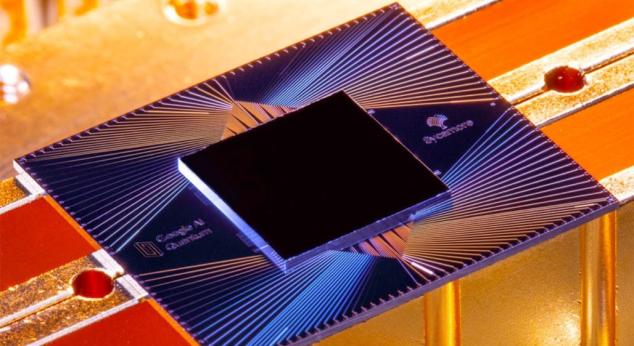INT 20-3 Highlights Report
Scientific Quantum Computing and Simulation on Near-Term Devices
October 5 - November 13, 2020
D. Dean, D. Kaplan, C. Muschik, M.J. Savage

Photograph of Google’s 53-qubit Sycamore QPU. (Erik Lucero)
Recent demonstrations of quantum supremacy for specific computational science problems suggest that quantum computing and simulation are on the path to providing quantum advantages for scientific applications. For specific calculations at scale that are beyond the capabilities of classical computers, quantum simulation would provide a unique and necessary capability. We stand at the threshold of major private and government investment in quantum information science and quantum simulation and computing. This INT program was aimed at accelerating progress in these areas, focusing on applications to quantum many-body systems and quantum field theories that are anticipated to impact nuclear physics research.
QIS is a rapidly evolving area that engages scientists from many fields, including computer science, engineering, high-energy physics, mathematics, nuclear physics, atomic, molecular and optical science. The importance of creating a quantum eco-system in the US requires engagements among universities, national laboratories, and technology companies. This INT program was designed to bring together scientists, developers and engineers from many of these areas to brainstorm about areas that impact nuclear physics and could be impacted by nuclear physics. With the announcement of DOE NQI Centers a few weeks prior, it was timely. Given the newness of QIS to NP, an element of the program was educational at a general level, accessible to all career stages, which was accomplished with three Panel discussions that gathered international leaders for 90-minute discussions that were open to the public. The Panel discussions were recorded, and can be found on YouTube.
After two weeks of overview of the state of the art and near-term planning and opportunities, the program moved toward understanding deeper aspects of quantum simulation ranging from circuit and algorithm design, the role of and new explorations of entanglement, near-term device architectures including optical, super-conducting, trapped ion, cold atom, many-body systems that may be accessible in the near-term, the role of quantum machine learning, the role of technology companies, tensor methods. The last week of the program focused on more theoretical aspects of importance, such as holographic methods, advances in quantum chaos and formal aspects of thermalization.
